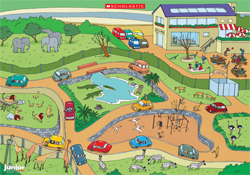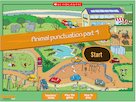Punctuation practice: Descriptive texts
Add to My Folder
Encourage children to develop their own punctuation style with these meaningful activities

Descriptive texts provide detail and, consequently, are wordier and likely to contain a wider range of punctuation. So, in the final article of this series, the range of marks to be used is extended to demonstrate how they can work together, provide space for detail, convey mood and make subtle connections. As the range of marks increases, so does the writer’s choice. Hence, last month’s message (in the September ‘09 issue) is reinforced: punctuation rules can be flexible and the writer does have opportunities to demonstrate a personal punctuation style. With this in mind and using the stimulating safari park context, children will find placing punctuation marks to be meaningful and exciting. Don’t forget, the Interactive resource , ‘Animal punctuation: Descriptive texts’ (members only), Poster , ‘Punctuation Safari Park’ and Activity sheets , ‘Punctuation practice: Descriptive texts’ are all available to download.
Activities
Already a member? Sign in below.
Published 21 September 2009
Reviews
You need to be signed in to place a review.


